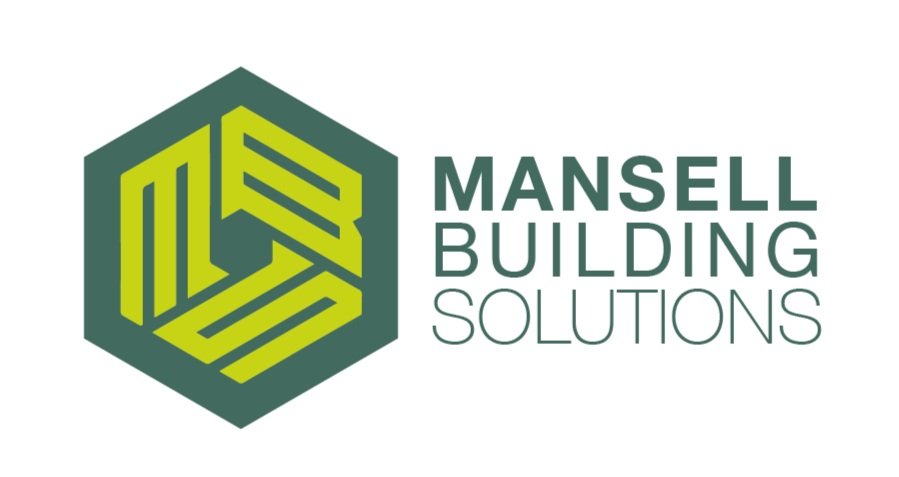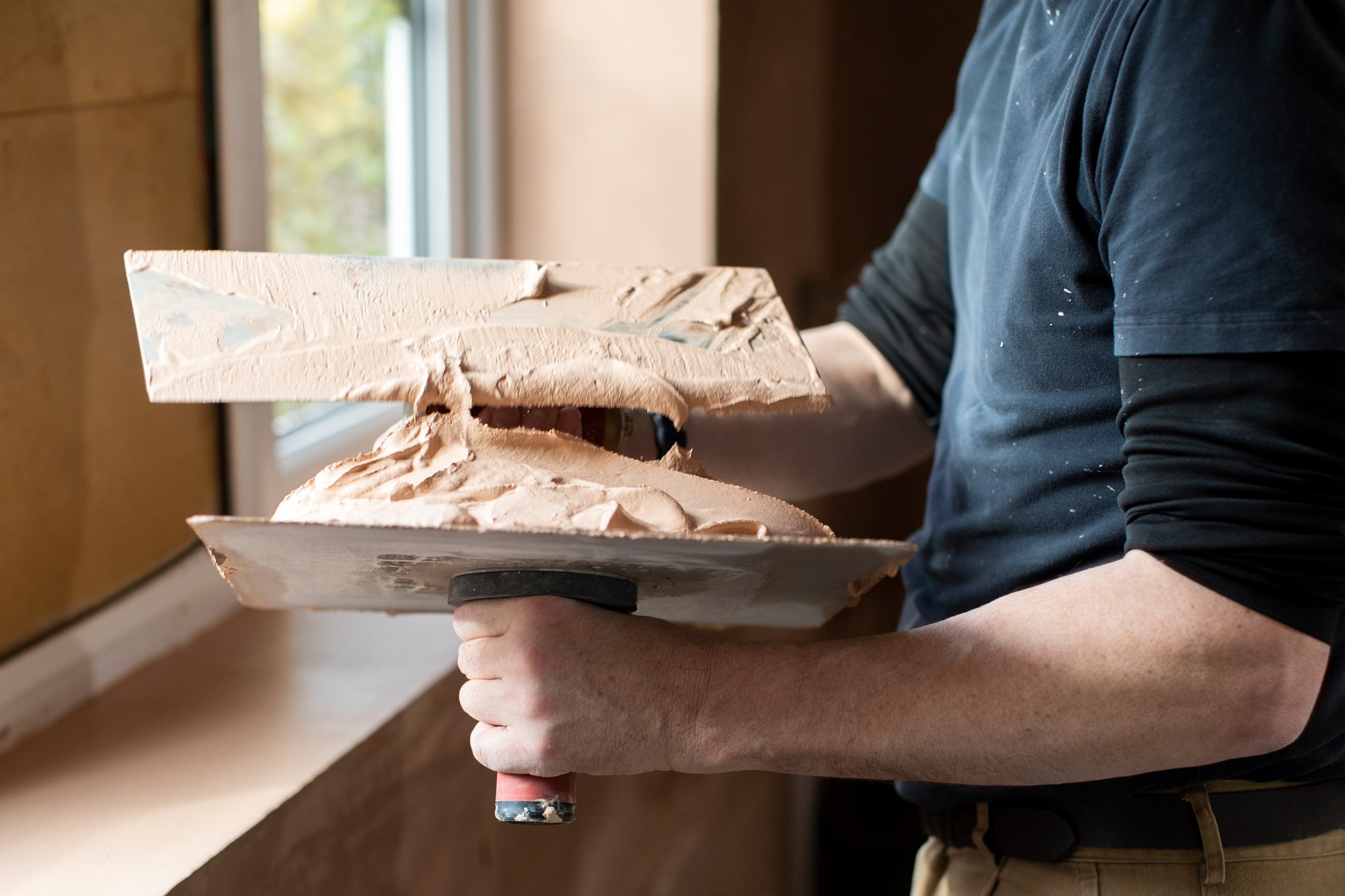Traditional plastering vs spray plastering – What’s the difference?
A big part of what we do at Mansell is delivering some of the best finishes available on the market. Whether the frame has been delivered by us or not, our onsite team will inherit an empty shell and deliver a slick interior that’s eye-catching, durable and ready for occupation.
One of the most important parts of the on-site finishing process is plastering. Historically, you might think of plastering as a fella with white overalls moving plaster around on a pallet before deftly smoothing it into place… and you’d be bang on! Historically, this has been the main plastering method used in a lot of residential settings.
However, what you might not be aware of is the spray plastering method that’s been widely used since the 90s. Often used on a more industrial scale than you’d get if you just needed your back room doing, spray finishing is the weapon of choice for us here at Mansell, helping us deliver the quality we’re known for while offering greater speed than the traditional method.
In this short blog, we thought we’d explore this big aspect of what we do, comparing the two approaches and why we favour spray finishes.
What is traditional plastering?
We don’t want to teach our granny how to suck eggs here, but it’s worth getting into the details so we can understand the main differences.
Under the traditional method, you’re applying plaster by hand using methods that have been refined over centuries. The typical materials used include lime, cement, gypsum or any combination of these mixed with sand and water to make a viscous paste.
Each of these materials has different qualities:
Lime plaster, one of the oldest forms, is renowned for its flexibility and breathability, making it suitable for historic restoration projects.
Gypsum plaster, on the other hand, sets faster and provides a smooth finish, commonly used in modern construction for interior walls and ceilings.
The plastering process
Manual Application: Applied manually using hand tools such as trowels, hawks, and floats.
Layers: Typically involves multiple layers, including a base coat (scratch coat), an intermediate coat (brown coat), and a finish coat.
Mixing: The plaster mix is often prepared on-site, combining plaster powder with water.
Drying Time: Each layer needs time to dry before applying the next one, which can make the process longer.
Texture and Finish: Allows for a high degree of control over the texture and finish, which can be customised based on the skill of the plasterer.
Labour-Intensive: Requires skilled labour and can be more time-consuming due to the manual application process.
What is spray plastering?
So what about this new-fangled spray plastering? Well for a start, it’s not all that new! Having been around since the 1920s in different formats, it became much more accessible in the 1990s when more user-friendly versions were available.
As a modern plastering technique, it utilises mechanical spray machines to apply plaster onto surfaces quickly and efficiently. The materials used in spray plastering are typically pre-mixed plasters, often composed of gypsum, lime, or cement-based compounds specifically designed to be pumped through the spray machine.
These pre-mixed plasters ensure consistency in the mixture and reduce preparation time, making spray plastering an ideal choice for large-scale projects and new build construction.
The plastering process
Mechanical Application: Uses specialized spray machines to apply the plaster onto walls and ceilings.
Single Layer: Often applied as a single layer, which can speed up the process.
Pre-Mixed: The plaster used is usually pre-mixed and ready to use, which reduces preparation time.
Drying Time: Generally faster due to the thin, even layer applied by the machine.
Texture and Finish: Provides a smooth and uniform finish, although customization is limited compared to traditional methods.
Efficiency: Much quicker and less labour-intensive, making it suitable for large-scale projects or areas requiring rapid application.
Comparing the two approaches
Ok, so we know what each of the methods are, but why choose one of the other? Or, more specifically, why does Mansell opt for the spray finish over traditional methods? Let’s look at the differences between the two:
Application Method:
Traditional: Manual, requiring skilled labour.
Spray: Mechanical, requiring machinery and minimal manual intervention.
Speed:
Traditional: Slower due to multiple layers and drying times.
Spray: Faster due to single-layer application and quicker drying.
Finish
Traditional: Highly customisable and textured finishes possible.
Spray: Typically smooth and uniform finishes.
Cost
Traditional: Can be more expensive due to labour costs.
Spray: Generally more cost-effective for large areas.
Suitability:
Traditional: Ideal for detailed and bespoke finishes and restoration work.
Spray: Ideal for large-scale, new-build projects where speed and uniformity are essential.
Why do we use spray finishes?
Now that we know the difference between the two approaches, why do we mostly favour spray finishes for our work? The answer is obvious. With spray finishing we’re able to finish jobs with less manpower, more quickly and at a lower cost to our client, all without a drop in quality.
Traditional plastering will always have its place for more specialised jobs, but for us, on the kind of projects we’re working on, spray finishing is king!


